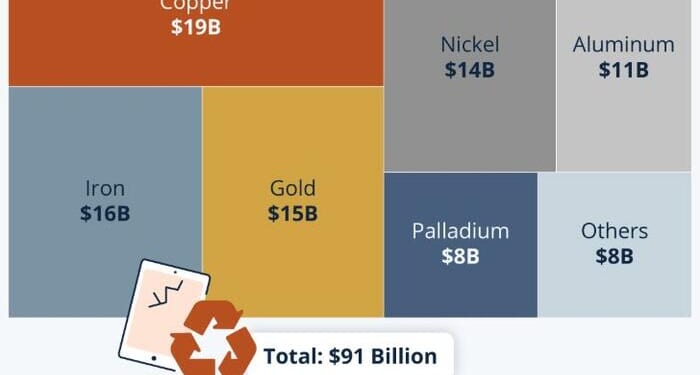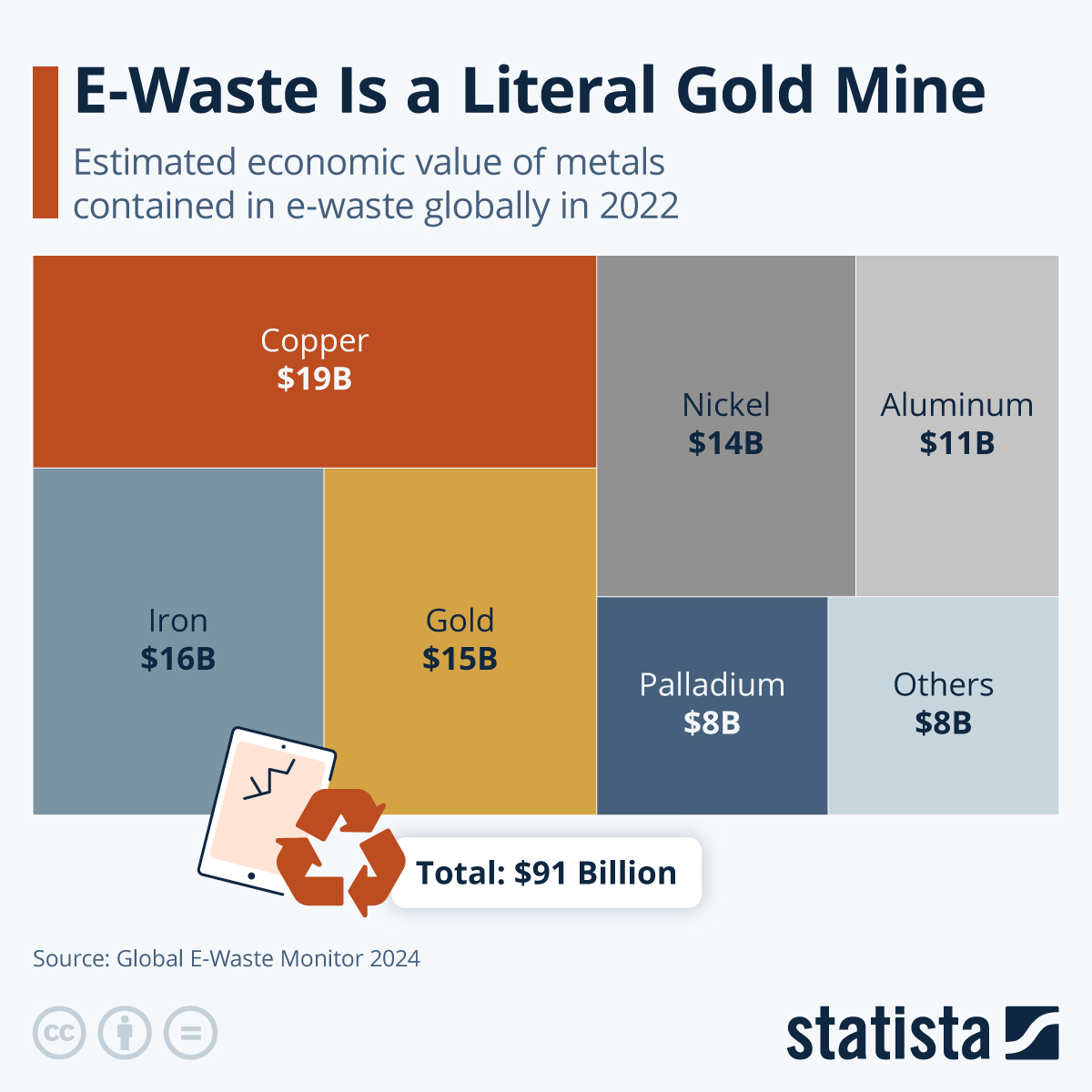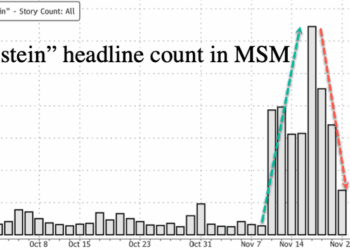This year’s International E-Waste Day, celebrated annually on October 14 to raise awareness about the growing problem of electronic waste and promote responsible e-waste management, focuses on the critical resources contained in e-waste. These days, as some of those materials have become a bargaining chip in geopolitics, it’s more important than ever to recover the valuable resources contained in unused or broken electronic products.
According to the latest edition of the Global E-Waste Monitor – a flagship publication on the topic funded and prepared by the UNITAR SCYCLE Programme, ITU and Fondation Carmignac – global e-waste contained 31 billion kilograms of metals in 2022, including approximately 4 billion kg of metals classified as critical raw materials. And it’s not just from an environmental or political perspective that it makes sense to recover the metals, but also from a financial point of view.
As Statista’s Felix Richter sums up in the following chart, the estimated value of metals contained in e-waste in 2022 was $91 billion, with copper, iron, gold and nickel the most valuable components.
You will find more infographics at Statista
Only a fraction, $28 billion, of this value was recovered in 2022, however, with $9 billion worth of metals recovered in documented formal collection and recycling schemes and $12 billion (mostly iron, copper and platinum-group metals) recycled through informal routes in low- and middle-income countries.
According to the report, this is not nearly enough to balance out the negative effects of our current treatment of e-waste, with externalized costs to human health and the environment estimated at $78 billion per year.
All things considered, the authors estimate the overall impact of e-waste management to have been a net cost of approximately $37 billion in 2022 – a cost that could rise to $40 billion annually by 2030 in the business-as-usual scenario.
International E-Waste Day was established in 2018 by the WEEE Forum, an international association of organizations involved in the collection and recycling of waste electrical and electronic equipment (or ‘WEEE).
Its aim is to encourage consumers, companies and policymakers to take action in reducing e-waste, improving recycling rates and promoting a more circular economy. Each year, the initiative highlights a specific theme to inspire more sustainable habits worldwide.
Loading recommendations…


















